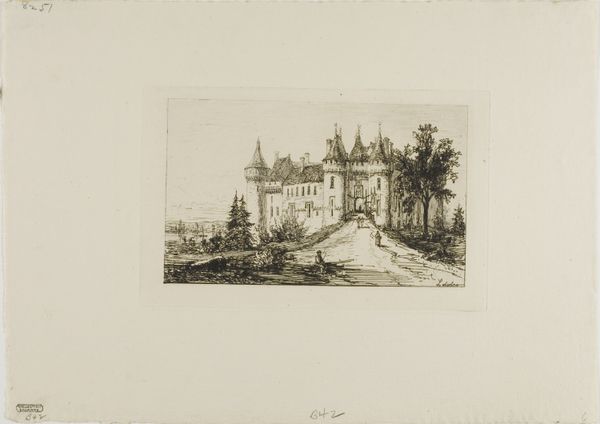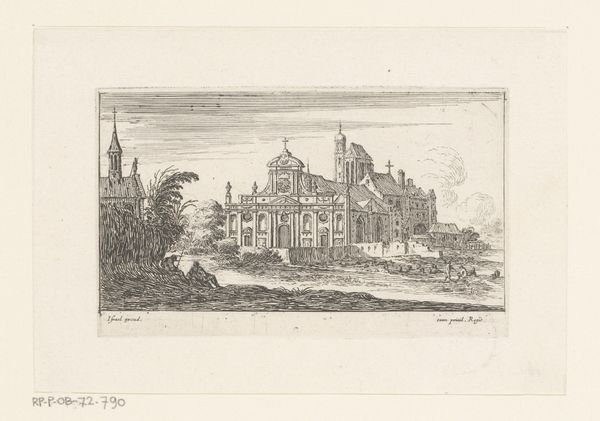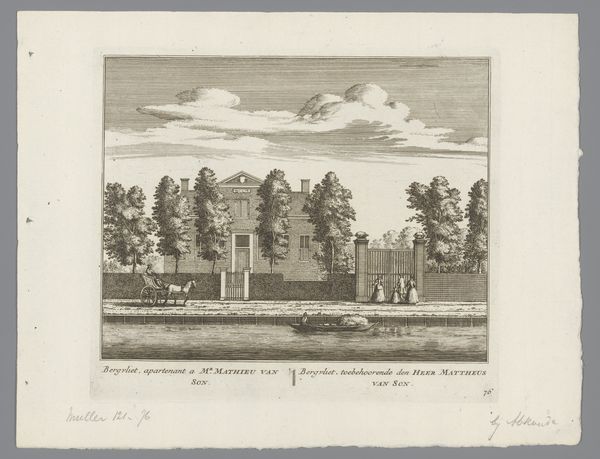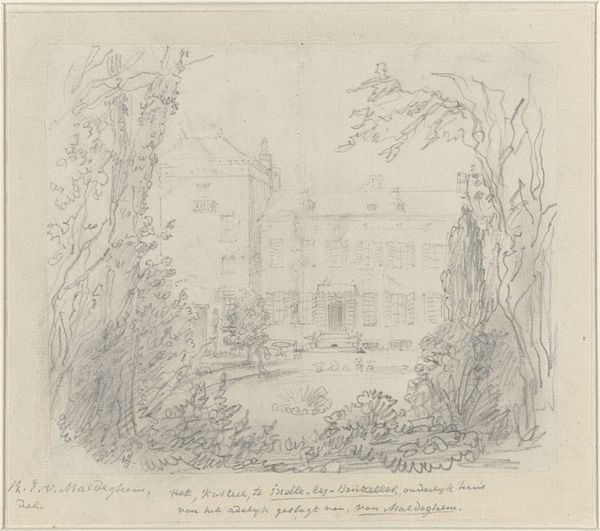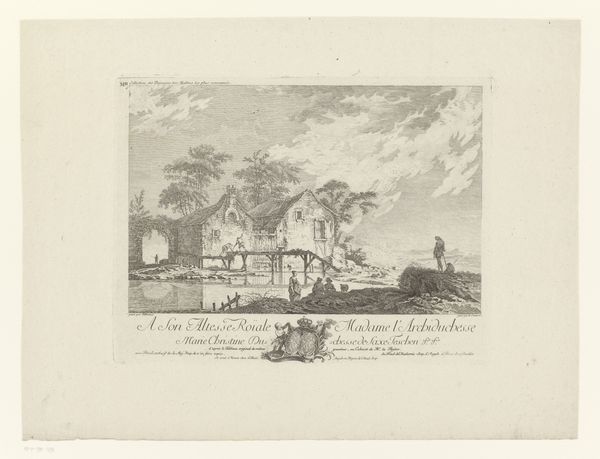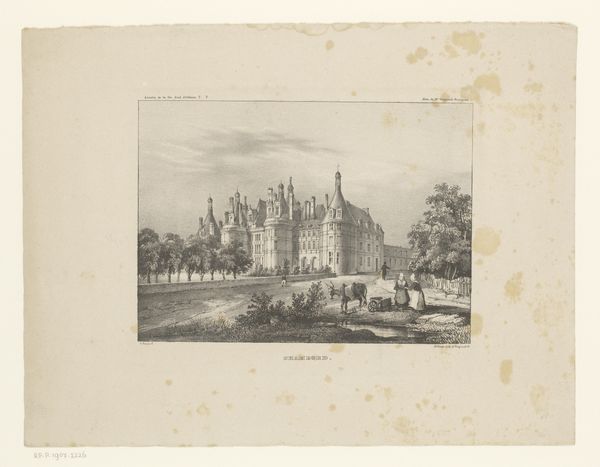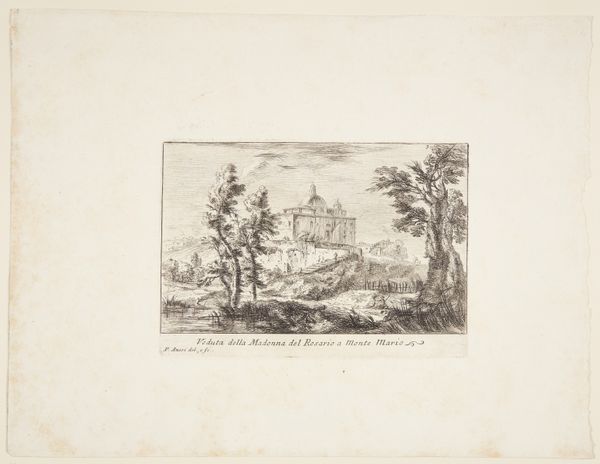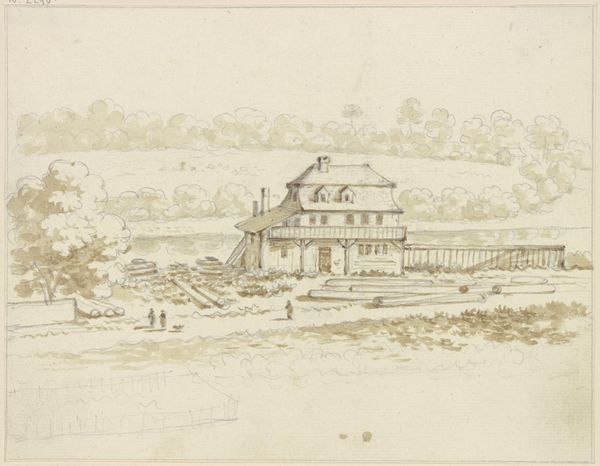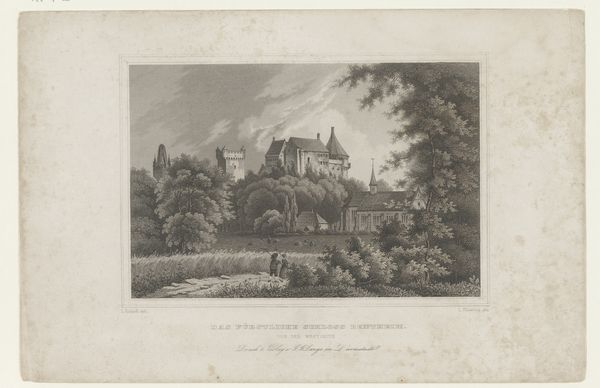
drawing, lithograph, print, etching, paper, architecture
#
drawing
#
lithograph
# print
#
etching
#
landscape
#
paper
#
romanticism
#
cityscape
#
architecture
Dimensions: 167 × 219 mm (image); 236 × 289 mm (sheet)
Copyright: Public Domain
Editor: This is Eugène-Louis Lami's "Château de Chambord," created between 1820 and 1835. It's a print combining lithography and etching on paper. I'm immediately struck by the contrast between the intricate detail of the château and the more sketch-like rendering of the trees in the foreground. How do you interpret this work, especially within its historical context? Curator: It’s interesting you notice that contrast. Lami's print reflects the Romantic era's fascination with power, nature and history but from a particular class perspective. Chambord, of course, symbolizes royal authority, but Lami also highlights its setting within a carefully cultivated landscape. The people gathered there too suggest how access to power and pleasure during that period was very specifically structured. To your eye, who do you think the people represent? How does it impact the meaning of the work as a whole? Editor: I guess they could be members of the aristocracy enjoying the grounds, or perhaps they’re there in service to them, further underscoring social hierarchies. But I wonder, is Lami romanticizing the Chateau or commenting on the power it embodies? Curator: Perhaps both. Romanticism wasn't just about beauty; it also engaged with the power dynamics of its time. Lami might be subtly critiquing or upholding the values of this aristocratic world, reflecting the shifting political landscape following the French Revolution. Considering issues like social inequality, the legacy of monarchy and its complicated place in French Identity is so crucial to understanding what Lami captures here. What are your thoughts? Editor: It certainly adds another layer. Thinking about Romanticism and the socio-political background provides a new way of viewing it – beyond just aesthetic appreciation, I mean. Curator: Precisely! By examining the context, we can start to decode the complex messages embedded within the image, making the artwork relevant to ongoing conversations about power and representation. Editor: Thank you; I'll definitely keep these factors in mind when approaching other works from this era. It helps me appreciate the complexity and multifaceted character of works such as this.
Comments
No comments
Be the first to comment and join the conversation on the ultimate creative platform.
